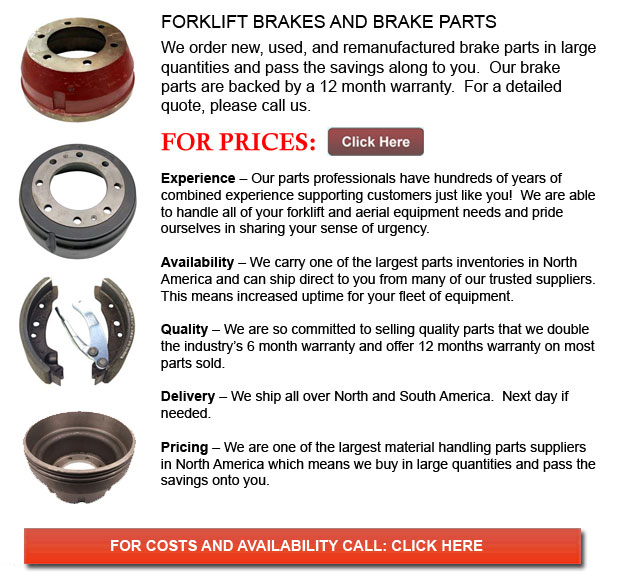
Brake for Forklift - A brake drum is in which the friction is provided by the brake pads or brake shoes. The pads or shoes press up against the rotating brake drum. There are some other brake drums types along with certain specific differences. A "break drum" would normally refer to when either pads or shoes press onto the inner outside of the drum. A "clasp brake" is the term utilized so as to describe when shoes press next to the outside of the drum. Another kind of brake, referred to as a "band brake" utilizes a flexible belt or band to wrap around the outside of the drum. If the drum is pinched in between two shoes, it can be referred to as a "pinch brake drum." Similar to a conventional disc brake, these types of brakes are somewhat rare.
Prior to the year 1995, old brake drums needed constant adjustment regularly to be able to compensate for shoe and drum wear. "Low pedal" or long brake pedal travel is the dangerous outcome if modifications are not executed satisfactorily. The vehicle could become dangerous and the brakes could become useless when low pedal is mixed with brake fade.
There are various Self Adjusting Brake Systems presented, and they could be categorized within two main types, RAI and RAD. RAI systems have inbuilt tools that avoid the systems to recover whenever the brake is overheating. The most popular RAI makers are Bosch, AP, Bendix and Lucas. The most famous RAD systems include Ford recovery systems, Volkswagen, VAG, AP and Bendix.
The self adjusting brake would normally just engage whenever the lift truck is reversing into a stop. This method of stopping is acceptable for use whereby all wheels use brake drums. Disc brakes are used on the front wheels of motor vehicles these days. By working only in reverse it is less possible that the brakes would be applied while hot and the brake drums are expanded. If adjusted while hot, "dragging brakes" can happen, which increases fuel consumption and accelerates wear. A ratchet mechanism that becomes engaged as the hand brake is set is another way the self adjusting brakes may operate. This means is just appropriate in applications where rear brake drums are utilized. When the emergency or parking brake actuator lever goes over a specific amount of travel, the ratchet advances an adjuster screw and the brake shoes move toward the drum.
There is a manual adjustment knob placed at the base of the drum. It is usually adjusted via a hole on the opposite side of the wheel and this involves getting underneath the lift truck with a flathead screwdriver. It is of utmost significance to move the click wheel correctly and tweak each wheel evenly. If uneven adjustment happens, the vehicle could pull to one side during heavy braking. The most effective method in order to ensure this tiresome task is accomplished safely is to either raise each and every wheel off the ground and spin it by hand while measuring how much force it takes and feeling if the shoes are dragging, or give each one the exact amount of clicks manually and then perform a road test.
![]() Click to Download the pdf
Click to Download the pdf
Forklift Parts
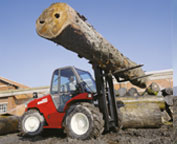
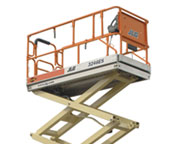
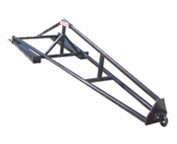
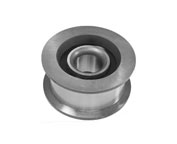
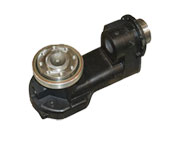
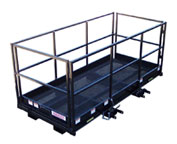
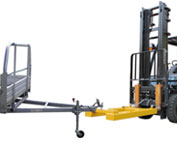
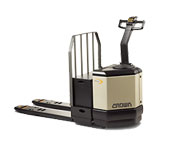
Lift Parts Express
TOLL FREE: 1-888-695-7994
LOCAL: 254-230-0021
208 HEWITT DR 103-159
Waco, Texas
forkliftpartswaco.com
Email Us
About Us


